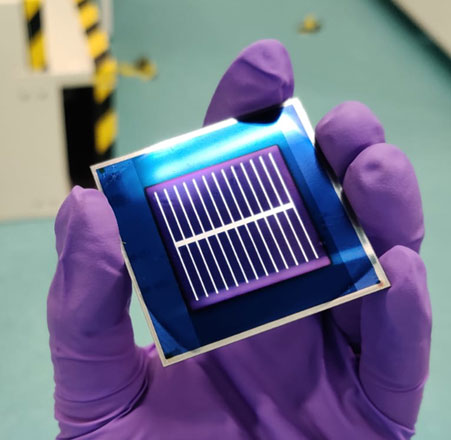The CEA-Liten at INES, in collaboration with ENEL Green Power, is developing the two-terminal Si/PK tandem technology with the aim of achieving high efficiencies in conventional photovoltaic formats with processes that allow their industrialization. Two approaches are being studied in parallel in the CEA laboratories: a NIP-type architecture with a record efficiency of 23.7% on active area, and since 2021 a PIN-type architecture.
The last few months have been busy working on the PIN architecture with :
- The development of the initial 9 cm² architecture
- The adaptation of the heterojunction silicon cell, realized on the CEA's pilot line, and recombination layer for integration in tandem
- A P-layer allowing depositing perovskite without preliminary treatment and the optimization of the N-type transport layers
- The introduction of a large gap perovskite
- Adding an anti-reflection layer that allows a gain in current and participates in the balancing of the currents
The result is a new record achieved with a cell showing an efficiency of 24.9% on a surface of 9cm² and Voc > 1800 mV, with shading correction.
This result is to be compared with the results obtained by other research groups in the world, with different approaches, taking into account the conversion efficiency and the surface of the device. At the time of publication, the record is currently held by HZB with 29.8% for a 1cm² device, with shading correction (https://www.pv-magazine.com/2021/11/22/helmholtz-center-achieves-29-80-efficiency-for-perovskite-silicon-tandem-solar-cell/).
Further optimization is needed to improve the performance of the Si/PK tandem cells on 9 cm² before moving to larger areas.

Photo of a 9cm² tandem cell © CEA